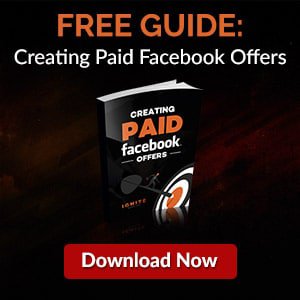

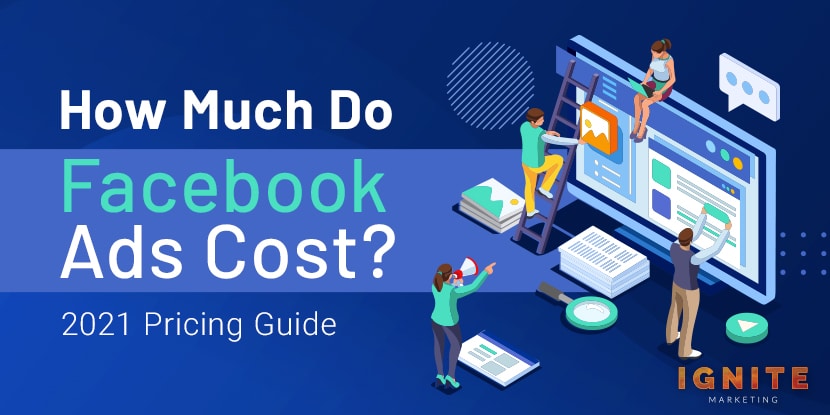
To advertise products or services online, the first two platforms that invariably come to most marketers’ minds are Google and Facebook. Facebook started its journey as a social networking site and has grown leaps and bounds to become a viable advertising platform for those who want options on par with Google’s AdWords. If you’re considering Facebook ads for your business in 2021, you may want to know how much those ads cost.
Unfortunately, it’s not that straightforward to arrive at a number. Advertising on Facebook can cost anywhere between less than a dollar a day to hundreds and thousands of marketing moolah each month. The actual cost depends on what your advertising goals are and how much you’re willing to spend.
Reaching users or potential buyers on Facebook organically has been constantly on the decline, rendering inorganic approaches a lot more relevant and vital. In this article, you’ll learn everything there is to Facebook ads, their costs, setting them up, methods to bring down your costs, and a host of other information.

Before looking at the exact Facebook advertising numbers, it’s wise and critical to learn how Facebook ads work or how the numbers mentioned later in the article are arrived at.
First and foremost, you cannot just buy an ad on Facebook right away. There are just too many companies or marketers looking to promote their offerings on Facebook. As of the third quarter of 2020, more than 10 million active advertisers were on the site. The platform doesn’t have an unlimited supply of virtual real estate to accommodate all of them at once.
There are different kinds of Facebook ads that serve distinct purposes or help accomplish specific objectives. For instance, you can use Facebook advertising to:
Here are some of the common Facebook ad types:
“Page like” ads are perhaps the first ad format that comes to most people’s minds when they think of Facebook ads. The advert is displayable on various devices or screen sizes, and it comes with a “call to action” that’s prominent enough to attract the ad viewer’s attention. To increase your chances of getting “likes”, choose the best image for the ad.
Link Click ads help promote your website and send users to your blog post or landing pages. Besides helping increase your site’s traffic, there’s also the indirect advantage of generating “likes” for your business’s Facebook page.
Video ads are a variant of Link Clicks. The only difference is they employ a video instead of an image.
Each time you post a link on your page, Facebook provides you the option to augment the post’s reach through its “boost post” feature. Before clicking on the option to promote the post to more users across the platform’s advertising network, you may ascertain the post’s target audience.
A carousel ad allows you to show a maximum of 10 pictures and/or videos, calls to action, links and headlines, etc., in one ad unit. For e-commerce advertisers, carousel ads are convenient as they help them promote multiple offerings at once. On the other hand, marketers can use the ad format to promote different offers and posts to attract leads.
Lead ads, as the name indicates, are ideal for procuring fresh leads. The ad type lets new users register for your offer or download your content without exiting the Facebook platform. Because people are not directed outside of Facebook, the chances of scoring email addresses of potential customers are pretty strong.
Collection ads allow you to exhibit multiple products sold on your business site. The ad format makes it convenient and fun to discover, peruse, and buy products in an immersive and visual manner.
Display ads, canvas ads, page post photo/video ads, page post text, etc., are some of the other Facebook ad types you could use.
Not to mention, costs will vary based on what you want to accomplish with your ads, how many people you want to reach, the part of the world your target audience lives in, their education level and employment status, etc.
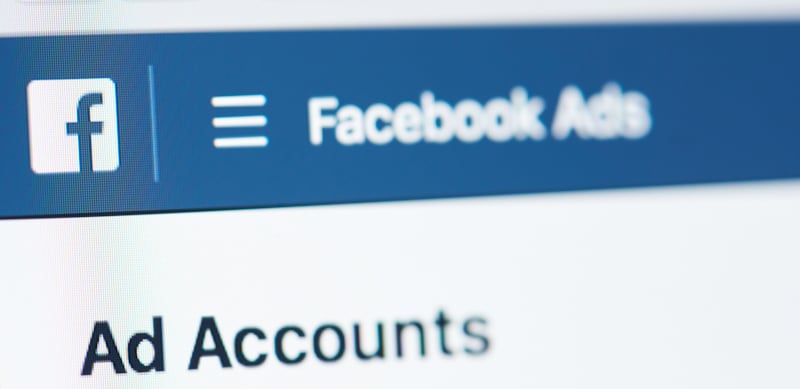
The objective of this guide is not to teach you how to create a Facebook ad. But it doesn’t hurt to get an overview of things – particularly from the “cost” side of things.
The new ad creation process begins with the budget. By default, the daily budget is set at $20. You can lower the number or increase it further and set it as “Daily Budget” or “Lifetime Budget”. “Daily budget” is the highest amount you’ll spend on an ad per day. “Lifetime budget” is the maximum you intend to spend for the whole ad campaign.
When selecting “lifetime budget”, you must also set the ad’s start and end dates. Earlier, Facebook provided the option to run an ad campaign indefinitely. That facility is no longer there, which is not a bad thing – particularly when you consider how Facebook marketing amateurs can have zero clues about their ad campaign’s optimal duration.
You cannot publish ads without setting up a payment method, which would pay for running your adverts. Once the ad account is set up, you can use it for all your future ads.
Ad account information changes will be needed if you’re creating a new advert account or changing the payment method. Facebook will let you select your time zone and billing currency. Add in your information carefully and accurately, as you may not modify the details later.
You can add more than one payment option. As you advertise more on the platform, it’s recommended to add another payment method. If your primary payment option fails – for instance, due to card expiration – Facebook would stop all your ad campaigns and cause an unnecessary, avoidable break in the flow.
When there’s a secondary payment arrangement in place, Facebook will bill the alternative method in case of failure with the primary method, and things shall continue to operate smoothly.
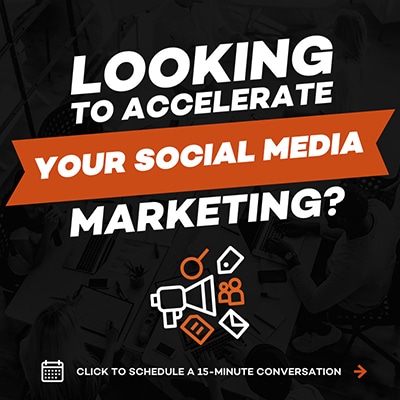 Billing and Threshold
Billing and ThresholdExpect a Facebook advertising bill at each month’s end or when you’ve reached your “billing threshold”. The threshold signifies that your main payment method would be charged each time a specific billing limit has been hit.
In the beginning, the threshold will be pretty low at $25. That means you would get billed each time $25 is spent for ads. As you continue to spend on ads and the payments get processed correctly, the upper limit will be increased – up to $750. The increase is incremental - $50, $250, etc.
Kindly note, the lower starting threshold has zero influence (at least not directly) on your ad campaigns. They only ascertain how often you’ll get billed by Facebook. A more significant threshold is always preferred as that means dealing with fewer invoices. If you want your threshold to be increased earlier than usual, contact Facebook support.
As mentioned above, Facebook has more demand for its ad space than it could supply. As a result, there are no fixed ad rates. They keep changing based on how many advertisers are competing for the same ad space.
There’s an auction process that determines how much an advertiser must shell out for ad space. And to ascertain the figure, advertisers must compete or bid against each other. The higher the number of advertisers vying for the ad spot, the greater the ad’s cost. Not to mention, the individual or company that bids the highest gets the spot.
Kindly note, the term “competition” not just denotes companies within your industry or related markets. Businesses that want to reach out to the same or similar audiences as you will also be considered “competition”.
For instance, if you sell smartphone cases, you’ll be competing against other smartphone case sellers/manufacturers and smartphone accessory makers in general, mobile app companies, etc. The lesser the “Detailed targeting” criteria for your ads are, the higher your competition will be.

Your ad budget and bid pretty much ascertain how much you end up spending on Facebook promotions.
As briefly mentioned above, your budget could be “daily” or “lifetime”. As the name indicates, daily budgeting is the amount you’re willing to expend on ads every day. Your lifetime budget is the sum you’ve earmarked for the entire campaign – which could be a few weeks, months, or even years.
If you’ve set aside a lifetime budget but haven’t explicitly stated your daily limit, Facebook would automatically arrive at that figure on your behalf, taking your ad campaign duration and budget into consideration.
Kindly note, even if your bid is $3 and the biggest bid from your competitor is $1.75, your rate will come down to $1.76 and will not be $3. If your maximum bid was $2.50 and the highest competing bid was $2.10, your expenditure for securing the ad space will be $2.51. You’ll end up paying only a penny more always.
Facebook ad costs fluctuate every day. On certain days, you’ll spend lower than what you’re okay paying. On other days, the rate could be more than the upper limit you’ve set for your campaign. For instance, if you spent $1.51 for ad space last week, you may spend even lower than that this week or more than $3.50.
Therefore, if you’ve set aside a daily budget, it’s advisable to visit your Facebook ad dashboard now and again to check what the current trends suggest.
Though there’s no limit to how much you could spend on Facebook advertising, people tend to spend on average $0.5 to $2 per click. As per WordStream, the exact average irrespective of industries and products is $1.72. This average is purely mathematical and doesn’t weigh in essential aspects, such as industry, product, etc.
The average advertising expense for finance and insurance is $3.77 a click. The number is much higher than the overall average. A few other industries that are at the higher end of the spectrum include:
On the lower side of things, the cost per click for different industries is:
The average cost per click varies with countries as well, quite obviously. The average is $0.97. Countries such as the Czech Republic ($2.09), Sweden ($$1.33), Denmark ($1.23), etc., are above the average. The United States is only marginally over the average cost at $1.10. Countries that are below the average figure include Finland ($0.76), Singapore ($0.76), Croatia ($0.75), etc.
To put in a word of caution (as always), the above are rough estimates or ballpark figures, and your exact costs per click could vary when targeting users from the U.S. or Finland since there are just too many variables at play.

Your budget and bidding capacity ultimately denotes your Facebook ad expenditure. But certain significant variables influence the two or push you to make changes to them.
Facebook users with specific psychographic and demographic profiles are comparatively costly to reach. If the audience you want to show your ads to is highly sought after or lives in a developed country, your ad costs would be higher.
If the costs are too high to swallow, narrow down your audience or reach out to fewer people. The competition to reach out to that “slimmed-down” target audience could be lower, which could bring down your costs considerably. But if the ad placements available are fewer, those costs could be higher too. Once again, it comes down to demand and supply.
Therefore, tread with caution. Play around with the audience criteria and try to strike the right balance between ad costs and exposure for your offerings.
Every Facebook ad must have a “marketing objective”. The objectives could be broadly classified as:
The “objective” chosen could majorly impact your Facebook advertising expenses. Generally, ads to generate sales will cost more than promotions to gain exposure for your brand purely. In other words, clicks and conversions will cost more than post, video, or page views.
As stated in different ways above, your competition on Facebook will have a major say on how much ads cost you. In other words, if the demand is high and the supply is comparatively low, costs will go up.
The extent to which the competition influences your advertising costs also depends on their respective advertising budgets. If they have a somewhat capped spending limit, your costs could go down. But if you are a startup company up against a corporation that has a massive budget to boot, be prepared to shell out some serious dough if you would like to stand a chance.
Expect to pay higher than usual if you’re vying for an ad spot during peak times. For example, Facebook ad costs are usually high during the holidays, such as Christmas and New Year. And based on the country you’re targeting, your ad expenses could be higher during other times of the year as well.
For example, if you are looking to reach out to people in India during the Diwali season (September to November), expect to shell a few more dollars than you usually would. Similarly, during the Ramadan period (March to May/June), the ad costs to reach out to our Middle East brothers and sisters will be higher than standard.
Besides certain periods of the year, specific days and even hours could majorly ascertain how much you end up spending on the ads.
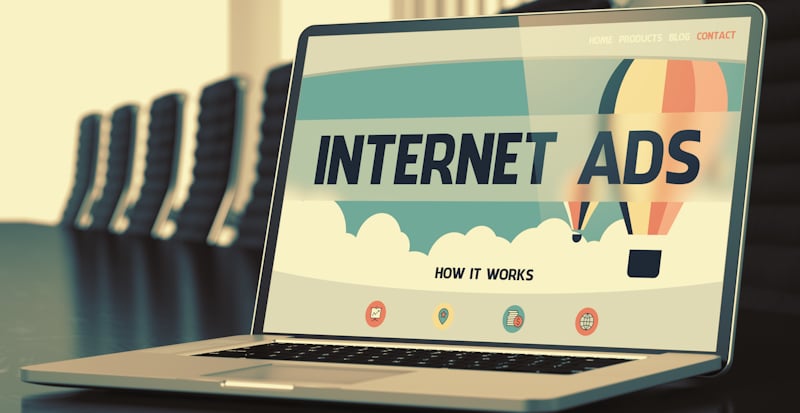
Facebook offers different ad placement options. Newsfeeds, in-stream video, Instant Articles, marketplace ads, etc., are some of them. Based on your ad campaign’s objective and budget, the ad placement format can vary. The different advertising options come with their unique ad placement costs.
You can also advertise on Facebook-owned companies or tools such as Messenger and Instagram. Messenger ad placement options are inbox and sponsored messages. Instagram lets you advertise through Feeds and Stories. Compared to Facebook ad placements, Instagram Feed and Instagram Stories are on the expensive side.
Relevance score is Facebook’s 1-10 rating scale that showcases how well your target audience is receiving or responding to your ads. When a Facebook ad gets 500 impressions or views, Facebook creates a relevance score for the ad. A relevance score of 4 or less is considered low. To learn more about relevance scores, click here.
A low relevance score denotes your ads are not relevant to the audience you’re targeting. Your ad’s relevance score goes up when users engage with it. If they ignore your ad, the score goes down. And if they go beyond just looking at the other side and click on “this ad isn’t relevant to me”, your score takes an even bigger hit.
If your ad’s relevance score is high or more than 6 or 7, Facebook’s algorithm will favor it. And the more love your ads get from Facebook’s code, the lesser will be your ad expenditure.
As mentioned earlier, there are multiple variables attached to setting up and posting a Facebook ad. And quite a few of them are not under your direct control. However, the ones you could directly manage can help bring down your ad costs.
Here are some strategies you could employ to bring down your expenditure and increase your ROI (return on investment):
Capping your bid is perhaps the easiest and most fundamental method to decrease your Facebook advertising cost or keep it under check. Facebook ad rates fluctuate. To not be negatively impacted by those vacillations, creating a bid ceiling is a no-brainer.
If you don’t want to spend more than $10 a day on ads, Facebook sets up your ad campaign accordingly. The restriction could mean losing out on attractive ad placements. But those opportunity costs are not worth chasing if your marketing budget is rigid.

You may also manage your total ad expenditure by setting a spending limit. When the limit is reached, your ads would pause and won’t run until you remove or increase the limit. Like with the case above, bringing an abrupt halt to an ad campaign may sound counterproductive. But when you have a budget to work with, the strategy does more good than harm.
Spending limits come in particularly handy when working with an agency or consultant that runs ad campaigns on your behalf. When you want to ensure the external entity doesn’t spend more on ads than what you would like them to, Facebook’s built-in spending limiter ensures that. Not to mention, it saves you time, effort, and hassle.
Not all ads perform identically, and even the same ads could fetch different results. Besides the ad placement time and target audience, specific aspects of the ad could also determine how well your ads work. For instance, the same ad could get different responses if only the images used are different.
To find out how significant the impact is, post the same ad twice with a set of two different pictures. Other than the image, you may also try out different copywriting texts or experiment with other aspects of an ad. This Facebook advertising method is referred to as “split testing”.
Continually playing with different aspects of your ad will help you gain valuable insights and create ads that offer the highest value for the buck. Kindly note, creating a Facebook ad and not having a tab on the analytics side of things is a “lazy, incomplete approach”.
As stated above, Facebook lets you state your ad’s “objective”.
Before creating a Facebook ad, it’s critical to know the reasoning behind it. If your ad campaign has no objective per se, you’ll end up squandering your marketing budget in no time and with little effort. Therefore, set an objective, and stick to it.
Do not have multiple objectives in the same ad campaign. For example, if the goal is to generate sales, do not try to create brand awareness simultaneously or with the same ad unit. You’ll end up spending more money, or the return wouldn’t justify the costs.
The different Facebook “objectives” have their unique functions, target audiences, images and text requirements, etc. The ad loses its emphasis when the objectives are mixed and doesn’t gain the traction a laser-focused ad would have got.
To focus on multiple objectives simultaneously, set up multiple ad campaigns.

Also, choose the right audience for the various campaigns. If you stick to the same audience or target everybody with each ad campaign, your costs will inflate, and you will have nothing to show in return. A particular ad may perform well with a smaller group of people. In that case, altering your target audience will bring down your Facebook advertising expenditure.
Suppose you want to connect with a completely new audience for a particular marketing campaign. In that case, it will be ineffective and inefficient to show ads to people who already know about you and your products – such as your Facebook page followers. When you modify your target audience and reach out to strangers, the ad response is significantly better.
In short, classifying your target users into different categories and subcategories will help churn out highly targeted messaging, calls-to-action, and offers. The outcome will be improved ad performance and reduced advertising costs.
To reiterate, your ad’s “relevance score” is vital. A good relevance score will bring down your advertising costs. But, how do you achieve a “good relevance score”? Or how to create ads that your target audience resonates with.
Multiple factors ascertain the relevance score of a Facebook ad. Perhaps the biggest factor is your target audience’s feedback (positive or negative). “Positive feedback” is any action that denotes engagement. For instance, if a target user clicks on your link, it’s positive feedback. “Negative feedback” denotes ads flagged or hidden by your target users.
Your target audience completely ignoring your ads is common. People putting in the effort and time to flag or hide an ad is not very prevalent. But it’s also not “rare” at the same time. Some people just don’t want to do anything with Facebook ads. These people do not sit through TV commercials or switch channels because they don’t want to see ads.
Getting a favorable response from your target audience for your ad is not that challenging. It’s all about sticking to the basics. In other words, select your target market with great deliberation. If you get your ad audience wrong, no splendid image or beautifully crafted texts will change fortunes.
If you’re selling something to people who know nothing about your company or product, choose lower-cost, high-value offerings. Cold audiences (those who have not engaged with or seen your content) are highly unlikely to buy a $1,000 product from you, even if they have high purchasing power.
If you reach out to them with an expensive product ad, a tiny segment will engage with your ad, and an even smaller percentage of that number will buy the product. Such a response from the target audience will get construed as “negative feedback” and cause the ad’s relevance score to dip.
Instead, market high-value offers, content, or lead magnets to your target audience. With reduced entry barriers, more people would act the way you want them to.
Video ads, making your ads look less like an ad and more like a regular Facebook post, using multiple ad variations, reaching out to a “warm audience”, etc., will also help increase your ads’ response.
Creating new ads and updating existing ones is critical to reducing your costs or deriving maximum value from your ad campaign(s). Variety is the spice of life!
A particular ad may have done well, and you may be proud of it. But every ad has a shelf life, regardless of how great it is. If you reuse the same ad, it will lose its charm and not attract responses that it once did.
Creating a new ad doesn’t imply designing an ad from ground zero each time. Changing the image, text, offer, etc., is usually more than enough to make the ad look new again. If you used the “split testing” technique, you’d know a lot more about making changes to your ads.
Often, you must reach out to people who are already familiar with your brand and offerings. Those include your existing followers. “Retargeting” and “remarketing” are ways to advertise to such people.
“Retargeting” is displaying ads to future customers tapping into their browser cookies. “Remarketing” is serving advertisements to potential buyers based on previous communications with them, such as email interactions. In other words, remarketing lets you display ads to Facebook users who have visited your site before or are on your mailing list. Even people who follow your Instagram page are the target audience.
Since the users you target are already familiar with what you do and provide, remarketing and retargeting are likely to generate increased clicks and conversions, decreasing your Facebook advertising costs in the process.
As explained above, Facebook lets you cap your daily advertising spend. But the question is: How to ascertain the cap amount? The straight answer depends on your product’s average cost-per-purchase, your total ad budget, and your risk tolerance.

Understand the figures pertaining to your business’ marketing and sales. A typical marketing budget is 5 to 12% of business revenue. This number, however, could vary based on the company’s size, scope, stage of growth, etc. Small businesses and start-up firms have to maintain a healthy revenue-to-cost balance while still investing funds and resources for marketing and growth.
As a general rule, small businesses that make below $5 million annually should set aside 7 to 8% of their sales for marketing, provided their margins are 10 to 12% after expenses. Companies that are just starting and want more exposure can afford to spend close to 20% of their revenue on promotions. If your business is relatively established and the requirement is incremental growth or maintenance, a 5% marketing budget is workable.
Now, you can either choose to spend your entire marketing budget on Facebook and other social media sites or allocate a portion of it. The exact or “magic” number is heavily reliant on your goals and expectations. If you have a set goal, use past industry information to ascertain the number of leads you will need, the cost for a core event, and the amount you can afford to spend for acquiring a customer.
If you are looking to create multiple types of Facebook ads (which you should), it’s essential to determine how much you’d want to spend on each ad type and purpose.
Close to 60% of your marketing budget must directly focus on promoting your offerings and making conversions. 20% of the funds must be set aside for retargeting. The remaining 20% should be allocated for audience building or to increase your follower base.
Though Facebook lets you choose a much lower daily ad budget than Google AdWords and other social networking websites, it’s recommended to spend a minimum of $5 daily on Facebook advertising.
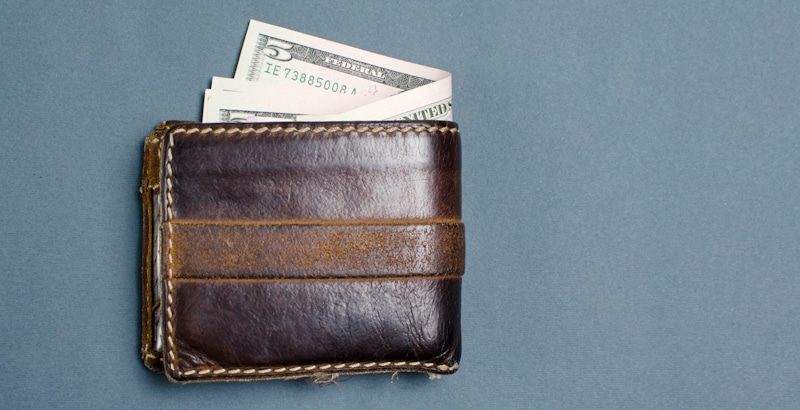
But if you cannot spend $5 a day, spending as low as a dollar per day is fine too. Above all, something is better than nothing. Moreover, if you are new to Facebook ads and would like to test the waters without blowing your marketing budget, $1 per day is a solid starting number. However, the industry you are in may necessitate more than just a dollar per day to determine the value Facebook ads provide.
For instance, if you are a chiropractor and would like to attract new clients, your daily advertising budget should be much higher than a dollar or even $5. The chiropractic industry is highly competitive, and, therefore, the money one must spend on chiropractor ads on Facebook is also much higher.
Spending anywhere between $30 to $35 a day is considered standard. The number may seem high, but it’s the bare minimum sum if you want to create a buzz or remain competitive in the space – particularly if you target potential clients in your geographic location.
To conclude, Facebook ad costs are dependent on multiple variables – including target audience, competition, objective, ad positioning, and relevance score.
The average cost per click is between $0.50 and $2.00 per click. However, the range and the figures mentioned above are rough estimates. To truly ascertain how much you’ll spend on a Facebook ad, creating one for yourself is the best method.
Before you institute an ad, make sure you adhere to the cost-cutting measures mentioned above. You may be a Facebook advertising newbie, but that doesn’t imply you must burn your pockets or learn things the hard way.
